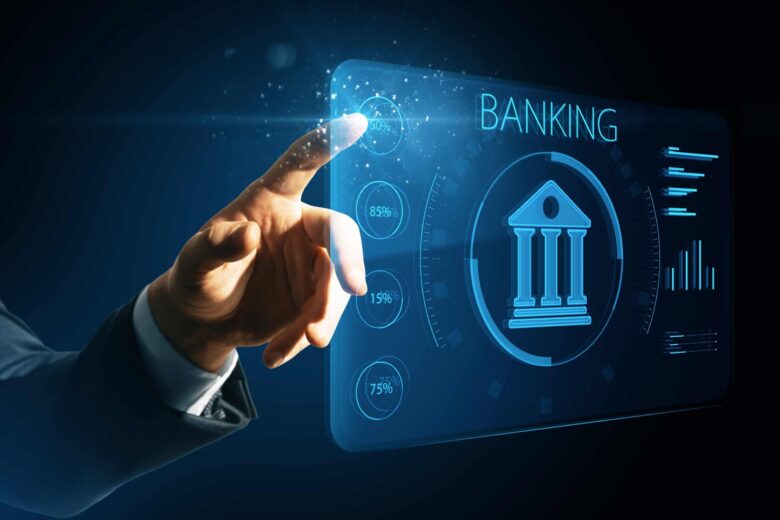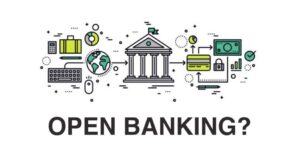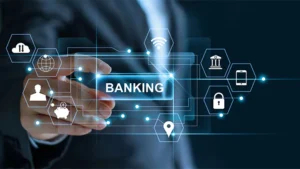As we approach 2030, digital banking will quickly become the primary way people manage their finances. Digital banking is no longer just an alternative to traditional banking. With a growing number of mobile apps, online platforms, and digital services working seamlessly together, expectations are shifting. Neobanks and fintech companies continue to evolve, offering highly specialized, technology-enabled financial services. Meanwhile, traditional banks are investing heavily in system transformation. This shift requires banks to offer more than just banking services; they must also create user-friendly digital experiences that meet customer needs.
AI Enables Personalized Services
Artificial intelligence is a key component of the future of online banking. By 2030, AI systems that can understand customer behavior and provide personalized recommendations will likely make banking services even more personalized and tailored to individual needs. AI will play a key role in proactively making informed financial decisions, whether it’s recommending investment opportunities, optimizing savings plans, or identifying seemingly unusual transactions. As chatbots and virtual assistants become increasingly intelligent, they will replace many basic customer service interactions with intelligent conversations that can resolve issues instantly.
Blockchain Will Transform Transaction Security
Trust and security remain crucial in the evolution of digital banking. By 2030, blockchain technology, known for its openness and immutability, will be a crucial component of all digital banking systems. Banks are already using blockchain to test smart contracts, faster and more secure cross-border payments, and digital identity verification. As the technology advances, it will play a crucial role in preventing fraud and ensuring the accuracy of financial information. The open nature of blockchain promises a bright future where financial transactions will become safer, faster, and easier to verify.
Open Banking Will Make Services More Competitive
Another key trend shaping the future of digital banking is open banking. With customer consent, financial institutions will share customer data with third-party providers through secure APIs. This will make financial products more personalized, competitive, and flexible. By 2030, open banking will be the norm, giving people access to all their financial accounts and services from a single screen. This will increase the competitiveness of the banking sector, stimulate new ideas, and improve the customer experience. Customers will have more control over their money and easier access to various services.
Sustainability and Ethical Banking Will Gain Importance
As more people care about others and the world, this will have a significant impact on digital banking by 2030. Banks will be under considerable pressure to operate in an environmentally responsible manner, invest in green projects, and disclose the environmental impact of their activities. Digital bank websites can offer tools to help customers understand their carbon footprint and choose eco-friendly investments. Fintech companies focused on sustainability will flourish and attract customers who value integrity. In the future, banks will not only manage money but also contribute to a greener world.
Rural and Underserved Areas Will Finally Be Included
Digital banks can facilitate financial access, particularly in rural areas with limited coverage. By 2030, improved internet connectivity and increased smartphone use will help traditional banks expand their full range of banking services to previously inaccessible areas. Mobile banking apps will significantly benefit these groups, offering services ranging from small loans to digital wallets. Rapid financial inclusion will enable people in developing countries to take out loans, save, and participate in the digital economy. Governments and banks will likely work together to ensure equal and broad access to technology for all.
Cybersecurity and Privacy Will Remain Top Priorities
As digital banking becomes the default choice for most people, threats will evolve accordingly. By 2030, cybersecurity will be one of the most heavily invested sectors in the financial world. Advanced threat detection systems, real-time tracking, quantum encryption, and privacy-first design will become the norm. Banks will be expected to be transparent about how they use and secure customer data. To protect customer privacy and security, regulators will make breaches more difficult. Customers will choose banks that are both user-friendly and guarantee the security of all transactions.
Conclusion
We anticipate a significant transformation in digital banking by 2030. New technologies such as artificial intelligence, blockchain, biometrics, and open APIs will transform it. Financial services will become more professional, more accessible to everyone, and integrated into the digital tools we use every day. To remain competitive in a rapidly changing market, banks will also have to prioritize security, sustainability, and user experience. As customers, we will have more control over our money and more ways to make it work for us. Digital banking is not only evolving but also becoming more advanced, secure, and user-friendly than ever .
FAQs
1. What are the key trends in digital banking in 2030?
The most significant trend is the growth of open banking, which allows third-party service providers to offer more customized solutions and uses artificial intelligence (AI) to personalize financial services.
2. Will traditional banks still exist in 2030?
Yes, but they will undergo a significant digital transformation and function more like technology companies, thereby competing with new banks and financial platforms.
3. Is it safe to use a digital bank?
Blockchain, biometrics, and AI-powered fraud detection technologies are all improving, meaning that digital banking will be much more secure in 2030.
4. How will online banking help people in rural areas?
Mobile services and better internet connectivity will give people in rural and underserved areas access to all banking services, giving more people access to money.
5. Do I still need to go to the bank in person?
By 2030, most banking transactions will be handled online, eliminating the need for frequent visits to bank branches. However, branches may still exist for specialized or high-value services.




